Is Taking Vitamin D 600 IU Enough?
October 2, 2015 by Ginger Hultin MS RDN
“How much vitamin D do you need? If you’re not getting enough, what are the impacts on your health? Is there a benefit to taking a supplement? Is taking vitamin D 600 IU enough?” These are all important questions and ones that I answer for my patients every day, tailored to fit their specific needs. It’s so critical for you to truly know how much you need and how to get it for your health.
Vitamin D, otherwise known as the ‘sunshine vitamin,’ has been getting a lot of attention in recent years due to its vital role in maintaining healthy body functions, including a robust immune system. The latest statistics in the United States show that more than 40% of adults have vitamin D insufficiency. Yikes. Meanwhile, the recommended daily allowance (RDA) for vitamin D was last updated in 2011 and is set at 600 IU per day. For many of my patients, this data begs the question– “Is taking vitamin D 600 IU enough?”
With so much chatter and contradicting information about how much vitamin D is adequate to support health, it can be a challenge to decide whether to supplement with the vitamin and, if so, how much. Let’s discuss what this means for you and your health.
First, What is Vitamin D?
Vitamin D is a fat-soluble vitamin that serves several vital roles within the body, including the maintenance of bone health, inflammatory and immune system modulation, anti-cancer effects, and even evidence suggesting that it can support mental health. You can produce vitamin D naturally after exposure to ultraviolet light rays in sunlight that trigger vitamin D synthesis. However, leading dermatological guidance tells us that we really shouldn’t be relying on that method because of sun/skin safety. Otherwise, food and dietary supplements are other sources of the vitamin. The two main forms of vitamin D are vitamin D2 (ergocalciferol), found in plant foods, and vitamin D3 (cholecalciferol), found in animal-based foods.
Is Taking Vitamin D 600 IU Enough?
Put simply, it depends. Your individual needs for vitamin D may vary and are based on numerous factors, including the season, where you live, how many hours per day you spend outdoors, what kind of clothing you wear, whether or not you’re using sunscreen, your age, and even your level of skin pigmentation.
The best way to find out whether you’re getting enough of the vitamin is to get a lab test from your primary care provider to check your serum level. Before supplementing with vitamin D, it’s critical to first get a baseline lab level so that you can make informed adjustments to your nutritional intake. Once you have that data point, it could be important for you to work with a nutrition professional (a registered dietitian!) to properly assess how to meet your needs and maintain optimal intake for long-term health.
At this point, you might find yourself wondering, “Why are optimal vitamin D levels essential for my health?” Let’s get into it.
Functions of Vitamin D
Vitamin D plays a vital role in several processes within the body. Here are some of the most important that I want you to know about:
Bone Health
Vitamin D is known for its role in aiding calcium absorption in the gut which helps promote bone formation. Without adequate vitamin D, the body is unable to effectively absorb calcium from the diet. The body will compensate for the missing calcium by pulling from calcium stores within the existing bone. This process not only weakens the bones within the body but affects the proper formation of new bone tissue moving forward. The risk for conditions such as rickets, osteomalacia (softening of the bone), and osteoporosis (a bone density disease) can be reduced with adequate vitamin D intake.
Inflammation
Vitamin D has been the focus of research in regard to its role in reducing inflammation. Studies have found that higher levels of vitamin D are associated with lower levels of specific markers of inflammation (e.g. C-Reactive Protein/CRP). This has been observed with certain diseases such as arthritis, and some respiratory, gastrointestinal, and mental diseases. This may occur due to vitamin D’s ability to block the secretion of small, cell signaling proteins (cytokines) that are released as part of the body’s innate immune response. More research is needed to assess the exact mechanism of action, however, multiple studies have observed the relationship between inflammation and vitamin D.
Cancer
The role of vitamin D in helping to prevent cancer is well established. This is due in part to vitamin D’s ability to modulate cell growth, in this case preventing the uncontrolled cell growth of cancer cells. Because of this, it’s a very important nutrient that I focus on for all of my clients who have cancer.
Immune Support
Vitamin D has a well-established role in regulating immune function. Studies performed during the Covid-19 pandemic have even further emphasized the important relationship between vitamin D intake and immune system resilience, supporting the body’s ability to fight off infections.
Studies on vitamin D supplementation for the risk reduction of influenza-like illness and Covid-19 infection:
- Vitamin D3 Supplementation at 5000 IU Daily for the Prevention of Influenza-like Illness in Healthcare Workers: A Pragmatic Randomized Clinical Trial
- Vitamin D Intake May Reduce SARS-CoV-2 Infection Morbidity in Health Care Workers
- Efficacy and Safety of Vitamin D Supplementation to Prevent COVID-19 in Frontline Healthcare Workers. A Randomized Clinical Trial
Mood and Depression
Studies have shown that if you’re deficient in vitamin D, you may be more susceptible to depression. If mental health and/or seasonal affective disorder (SAD) is a concern for you, it could be critical to learn whether your level of vitamin D is sufficient. Some of my clients have actually noticed a true difference in their mood once they correct a vitamin D deficiency!
Factors Affecting Absorption
With a nickname like the “sunshine vitamin,” it is not surprising to know that vitamin D deficiency is a prevalent issue during the fall and winter months when natural exposure to sunlight on bare skin is minimal. Further, some studies have indicated that in the fall and winter months, skin generates little to no vitamin D in states that are located at a northern latitude (37 degrees N, to be exact). For reference, this includes over half the United States including the area south of San Francisco, St. Louis, and Richmond, VA.
Besides geographic latitude, other factors that can affect vitamin D absorption include:
- cloud cover
- sunscreen use
- time spent indoors
- clothing cover
- skin pigmentation
Essentially anything that can block UV rays from reaching the skin lowers the amount of vitamin D that is absorbed, even in areas, and seasons, where rays are more direct.
Vitamin D Recommendations for Adequacy
The Institute of Medicine (IOM) recommends a dietary intake of vitamin D 600 IU daily (or 800 IU if over the age of 70). Since there are limited dietary sources of vitamin D, many people end up supplementing. Keep in mind that many people may still experience low blood levels even when supplementing, so it is important to talk to your doctor about getting tested, continual monitoring, and the proper food sources, sun exposure, and supplementation for your unique needs.
Carefully read nutrition labels and consider specific processing to be sure you really are getting a true vitamin D source in your food. For example, not all mushrooms contain vitamin D; they must be grown with ultraviolet light and will be marked as such to ensure they are a vitamin D source. Not all non-dairy milk or orange juice is fortified so be sure to read labels.
Importantly, you CAN be too high in vitamin D if you take too much from supplement sources so while some is good, more isn’t always better – like all supplements. Talk to your doctor to see if you should get your levels tested, monitored and possibly supplement this vitamin for optimal health. Many times, all you have to do is ask, so consider getting it tested at your yearly physical with other blood tests like cholesterol.
When it comes to supplementing with vitamin D (or any other dietary supplement) it’s important to find one that is high quality and has been third-party tested for purity and accuracy of contents to match what’s on the label. Additionally, the absorption of vitamin D can be enhanced or hindered depending on how it’s taken. The vitamin is best absorbed when taken alongside a meal. Absorption is hindered by caffeine. Registered dietitians like myself are experts on all things nutrition related, including dietary supplements, so if in doubt about the kind or quantity of supplement that is right for you, consider consulting a dietitian.
Foods That Contain Vitamin D
While food sources are typically inadequate for most people to get their necessary daily needs met, some unexpected foods do contain the vitamin. Ever heard of mushrooms containing vitamin D? Drop me a comment below if you’ve seen mushrooms grown under UV light labeled in the store.
Salmon
Depending on the variety, studies show that salmon (especially wild varieties) contributes ~450-950 IU of vitamin D per 3-ounce serving.
Canned tuna
Tuna varieties contain differing amounts of vitamin D, but the most convenient and affordable option is tuna canned in water. A 4-ounce can contribute ~150 IU of vitamin D.
Cod liver oil
Cod liver oil is more often used as a dietary supplement than a commonly consumed food on its own. If it is medically indicated, just a small portion of one tablespoon contributes ~1300 IU of vitamin D.
Whole eggs
Don’t ditch that yolk! Fat-soluble vitamins are contained in the yolk of an egg which contributes a small amount of dietary vitamin D at ~40 IU each. However, since eggs deliver such a small amount of the vitamin, it is not indicated to eat enough eggs daily to get all of your vitamin D from this source.
Mushrooms
Some mushrooms grown in ultraviolet light contribute vitamin D2 (ergocalciferol). Brands containing vitamin D will be marked as such since many types of mushrooms are grown in the dark and therefore will not be considered a vitamin D source. Find a brand grown in light for ~400 IU of vitamin D in 3 ounces of diced mushrooms.
Fortified milk (dairy and non-dairy)
Dairy milk and yogurts have been fortified with 100 IU per 8 ounces since the 1930s. Many, but not all, non-dairy or plant-based milk are fortified, so read labels carefully on any type of milk to be sure you are getting a fortified product.
Fortified orange juice
Many, but not all, packaged orange juices are fortified with vitamin D in levels similar to fortified milk (8 ounces contributes ~100 IU). They are also fortified with calcium. Keep in mind that freshly squeezed juices do not contribute vitamin D to the diet so read the labels of any juice package to verify that it is a fortified product.
Do you know what your vitamin D level is? Maybe it’s time to get a blood test! It’s always the right time to be more informed about your own health and nutrition needs. If you’re looking for in-depth, personalized support on your nutrition journey, I love to hear from my readers and am here to help. Book a discovery call with me here.
2 Comments
Leave a Comment

Ginger Hultin,MS, RD, CSO
Thanks for visiting! If you're struggling with a cancer diagnosis, autoimmune condition, gut health problems, or even a medical mystery, nutrition can make a HUGE difference in your day-to-day life. I run a virtual, concierge private practice where I partner with my clients over time to help them improve their health through nutrition. Be sure to visit the blog for easy, plant-based, anti-inflammatory recipes and our "Resources" page for a variety of self-paced programs, books, e-books, and nutrition podcast episodes.

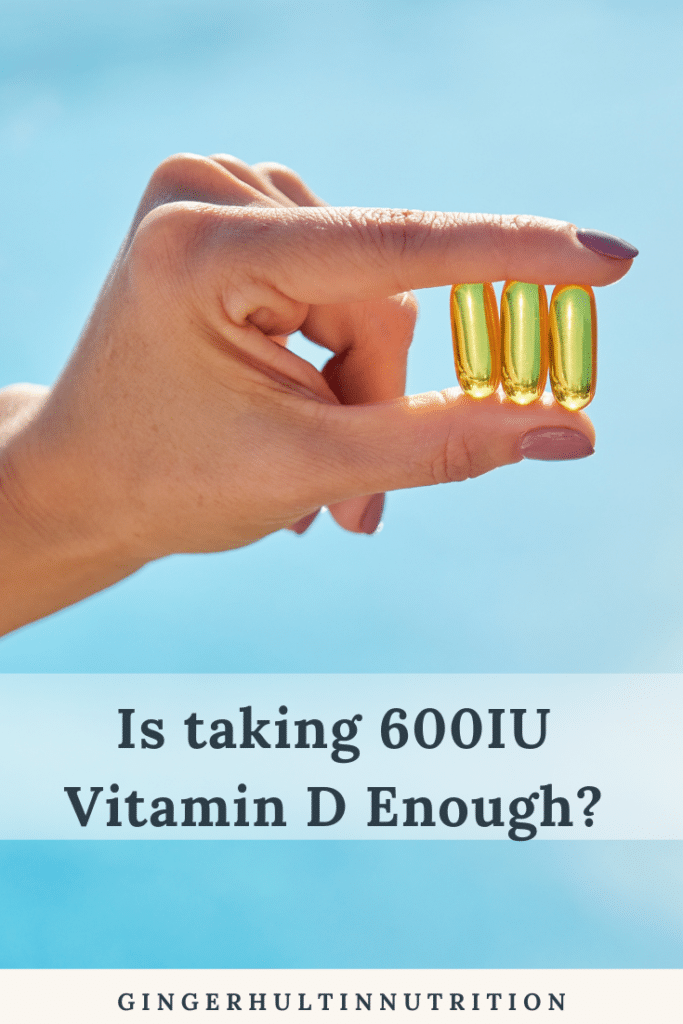
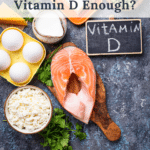
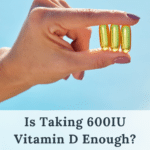
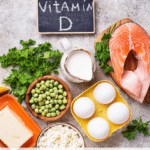
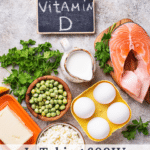
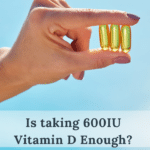
Wow, I had no idea vitamin D was affected by so many factors. Thanks for including the food sources too, I am definitely referencing this list from now on. Great post!